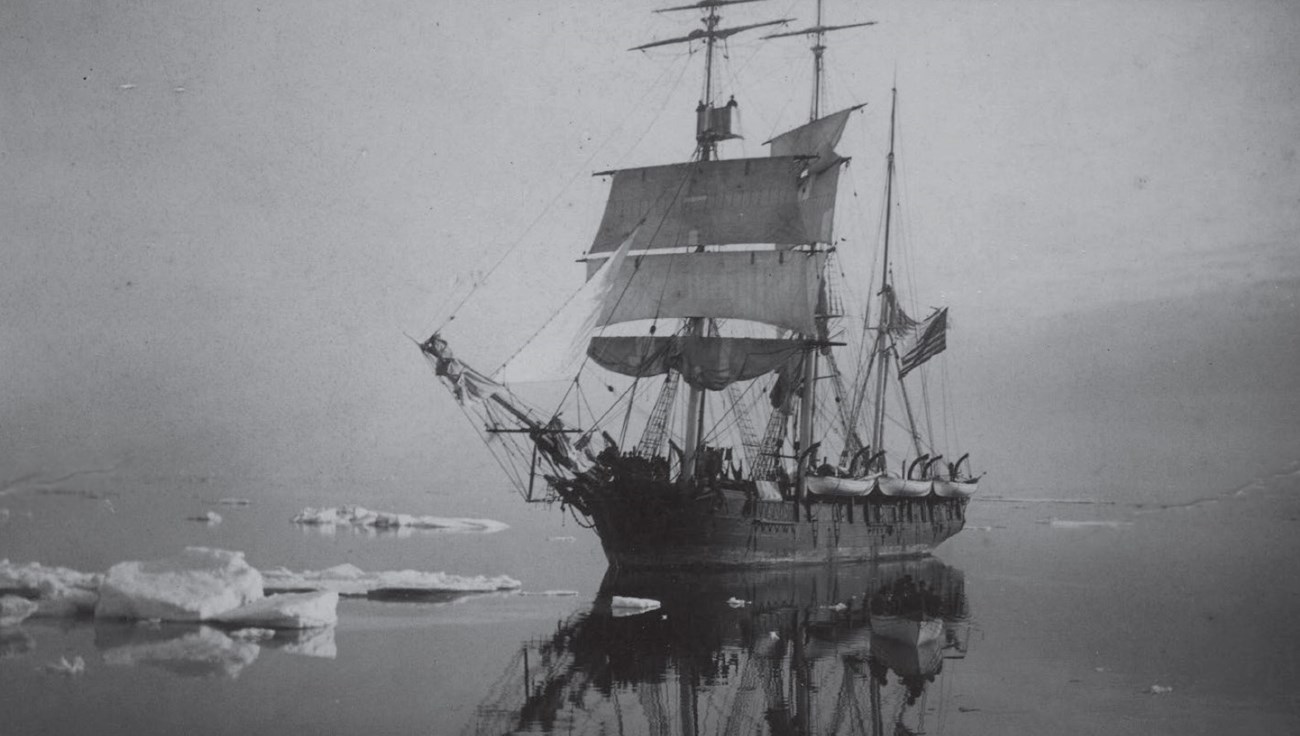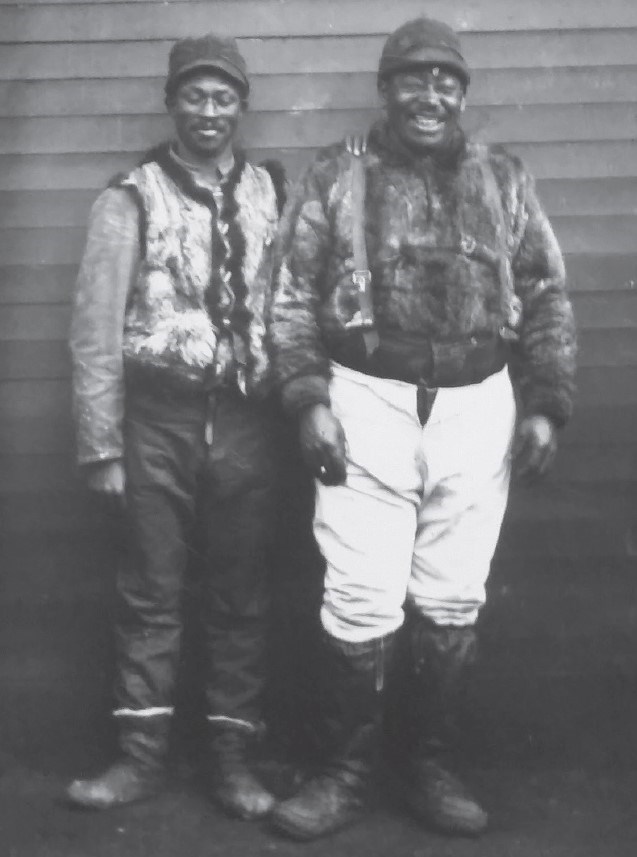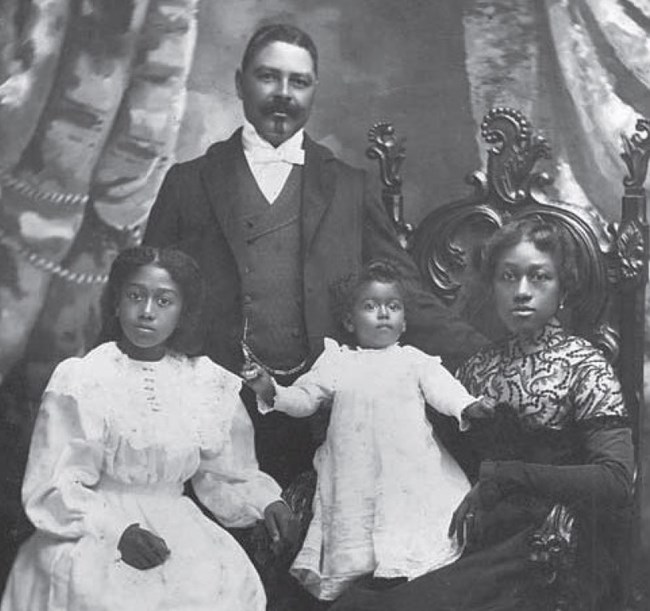Last updated: February 13, 2025
Article
Black History in the Last Frontier: Black Whalers in the North Pacific and Arctic

New Bedford Whaling Museum, reprinted in the Pacific Marine Environmental Laboratory, National Oceanic and Atmospheric Administration.

Alaska & Polar Regions Collections and Archives, University of Alaska Fairbanks. Accession no. 66-10-136n
A Racially and Geographically Diverse Industry
Black whalers were among the first Americans to reach Alaska, specifically its southeast panhandle in the early 1840s. These men were also among the first to view the icy waters of the Arctic by the late 1840s and early 1850s. The names of the barks and ships included the Arctic, Bartholomew Gosnold, Cambria, Caroline, Cherokee, Copia, Hercules, Janus, Magnolia, Minerva, Roman 2d, and Samuel Robertson, among others. The crews aboard these ships included men with “woolly” hair and dark skin, a way to describe men of African descent. Some of these men had escaped enslavement in the American South, while others were free men of color from the North. It would have been difficult to find a more racially and geographically diverse industry than whaling in the nineteenth century.
An Opportunity for Advancement
And while Alaska was far from a stop on the Underground Railroad, whaling in the Pacific provided hundreds and possibly even the thousands of men an avenue to find work after escaping bondage. Other free men of color sought employment in the whaling industry because of its reputation for advancement and an atmosphere with less discrimination than most land-based industries. Still others, however, may have been impressed into service on the whale ship under the fear or threat that they would be caught and returned to the South. A life at sea, while harsh and exceedingly dangerous, nonetheless ensured refuge from the slave catchers who increasingly roamed northern cities and towns during the 1850s.
NPS Photo
Less Discrimination
After the Civil War, the whaling industry continued its shift away from the Atlantic and towards the Pacific and Arctic oceans. As it did, black whalers like William T. Shorey found opportunities and even attained some fame for their maritime skills. For Shorey, born on a Barbados sugar plantation in the 1860s, life aboard a whaling ship was preferable to the racism he faced in the Caribbean. By 1886, Shorey had become first in command of the Emma F. Herriman and perhaps among the most effective whalers to ply his trade in the North Pacific. While not all black men secured the rank and position of Shorey, the whaling industry continued to offer men of color, as well as economic castaways from East Asia, Europe, and Africa, the chance for a modest livelihood in an era otherwise rife with discrimination.This was the context for those first African Americans who traveled into the North Pacific and reached Alaska’s waters and coasts. While Shorey was not the first African American to sail through the Gulf of Alaska and the Bering Sea, his story illustrates why a black man reared in the Caribbean, a region so thoroughly defined by racial slavery, would end up in far northern reaches of the continent. Early black history in Alaska thus started at sea, as some men escaped slavery and later, the punishing brutality of Jim Crow-era segregation in the American South. Others, like Shorey, though not born in the United States, still found life on the high seas provided the bestopportunity for advancement.
